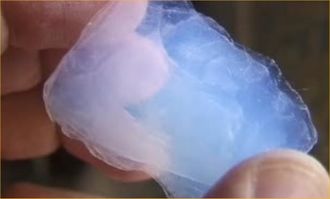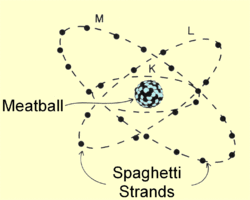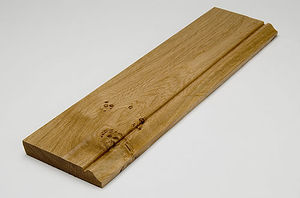Matter
Matter is the technical term given to what laymen refer to as "Stuff". Unless you can believe the word of one unimportant German pseudo-scientist, who suggests that matter and energy are the same thing, matter makes up everything known to science that isn't energy. Rather confusingly, Anti-matter is also considered as matter.
Elementary constituents of "stuff"
Classical theory
It used to be thought that everything in the universe was made up from four indivisible "things" called elements: Hard, Nothing, Hot and Wet. Every type of "stuff" would contain each of these elements in different quantities, and its physical properties were determined by its comparative quantities of each element. Using this reasoning, water was made entirely from wet, the ground consisted entirely of hard, strong alcohol was a combination of wet and hot, and the minds of anyone who disagreed with you were constructed wholly of nothing. This model of matter is still commonly believed amongst Creationists, Scientologists, and Mormons.
Whilst drinking copious quantities of alcohol in 1661, Irishman Robert Boyle realized that there must be more to its intoxicating effects than could be explained by the four classical elements. This led him to write his book The Sceptical Chymist (Chymist is not an antiquated spelling of chemist; Boyle was still drunk). Following on from Boyle's work, a Frenchman, a Russian and a Swede made some further (minor) discoveries in chemistry. These developments had to be polished off by the Englishmen John Dalton and Henry Moseley.
Modern theory
The Know-it-alls now generally accept that matter is made up of little bits of stuff called molecules, molecules are made up of littler bits of stuff called atoms and atoms are made of even littler bits of stuff called sub-atomic particles (the Know-it-alls were starting to run out of names at this point). After the discovery of the even littler bits of stuff, the chemists decided they would stop re-defining what we refer to as elements because it was all becoming rather silly. Every time they decided what was elemental, some bright spark would come up with something smaller.
Beyond the "sub-atomic"
Fed up with the lack of imagination in naming things amongst chemists, a group of said chemists decided to break away and redefine themselves under the new category of Physicists. The new cult of physics was even more obsessed with the consumption of alcohol than their predecessors of chemistry. They were also obsessed with making things smaller (a sharp contrast to the medical profession which, instead, seems rather obsessed with making things larger).
Unlike chemists, physicists prefer to theorise rather than experiment. Despite this, they have made some real discoveries. One of them was that even littler bits of stuff were made up of littler than even littler bits of stuff. They named the littler than even littler bits of matter Quarks, which are held together as sub-atomic particles with glue.
States of matter
Classical states
Solid
Solids are things that are hard. In solid objects, the little bits of stuff from which they are made are bonded in such a way that they cannot move away from each other, around each other or between each other. The result of this is that solid objects cannot pass through other solid objects. From drunken experience, most people deduce, at some point in their life, that objects such as the floor, lamp-posts and walls are definitely solid. Other examples of solids are metal, glass, wood and wood.
Liquid
Liquids are things that are wet. In liquid objects, the little bits of stuff from which they are made are not bonded in such a way that they cannot move away from each other, around each other or between each other. They are, instead, bonded in such a way that they can move around and between each other, but stilll not away from each other. The result is that solid objects can actually move through liquid objects. From drunken experience, most people deduce, at some point in their life, that stuff such as alcohol is definitely liquid. Sometimes, the same people also discover that water is definitely a liquid, and (usually too late) that you can't breathe in it. Often, liquids change into other things before you can even use them. Then they attempt to kill you. Or at least, that's what happened to me. Never mind.
Gas
Gases are things that are light (That is light as in "not heavy" as opposed to light as in "not dark"). In gassy objects, the little bits of stuff from which they are made are not bonded, and as such may move away from each other, around each other and between each other. From drunken experience, most people deduce, at some point in their life, that gases can make liquids fizzy or sparkling. The same people, when sufficiently bored, also discover that although bubbles of such gas usually rise from the bottom of the liquid to the top, some actually sink. Until recent studies proved it actually happens, this was thought to be a drunken hallucination.
Fluff
Fluff is an unusual state of matter that lays somewhere between solid and gas. Very few substances can exist in this state, and these substances can never exist in a liquid state. Materials observed as being able to exist as fluff include candy floss and cotton. Fluff can usually be eaten, another distinct characteristic. Most people can't eat gases. From drunken experience, many people living in remote rural communities discover, at a certain stage of their lives, that sheep are also fluff. Although it is currently unknown why certain materials exist as fluff rather than liquid, the leading theory is that the Flying Spaghetti Monster thought it would be funny to confuss people.
Lesser known states
There are some states of matter that are not as well known as those above. The collective term for these is "The Lesser Known States of matter".
Plasma
Plasma is stuff that is not just hot, not just really hot, but really, really, REALLY hot. This state is a kind of gassier state of being than the gassy state of gas. When in this state, not only are the little bits, or even the littler bits of matter free from each other, but the even littler bits of stuff of are free to move around. They are so hot that they are constantly speeding around in their (often not so) little environments in the hope that they can pass on this heat to other even littler bits of matter by bumping into them and yelling "tag....you're it!"
From drunken experience, most people deduce, at some point in their life, that melted cheese on bread (usually found on pizza and cheese on toast) is definitely plasma. Other types of plasma include the stuff that the sun and the stars are made out of.
Quark-gluon plasma
Until fairly recently, physicists believed that really, really, REALLY hot was the highest level of hotness, or temperature, achievable through either practice or imagination. However, recent experiments conducted under purely hypothetical conditions in a plastic beaker at the University of Rotherham, Antarctica, have shown that adding ice burns to really, really, REALLY hot things can make them even hotter. There is currently no official name for this temperature.
This, as yet un-named, level of hotness is hot enough to melt the super-sticky glue that holds Quarks together. This state of matter is not known to exist in nature and is, therefore, not really worth thinking any more about.
Missing stuff
Dark matter
Whilst formulating the current model of the universe, the physicists were, as usual, rather intoxicated. As such, they made a number of mistakes in the process. Their model meant that there needed to be more "stuff" in the universe than could currently be found. They briefly toyed with the idea that their calculations were correct, and searched everywhere for the missing matter, including down the back of sofa just behind the cushions. Unfortunately, it wasn't there (though they did find £231.47 in loose change and several novelty contraceptive sheaths).
At this point, they devised a cunning plan. They told the world that their calculations meant the missing 96% of the stuff was something called dark matter and could not be detected by conventional methods as it was in space, and just happened to be the same colour as space. This helped them secure extra research funding, which they intended to spend mostly on fuelling their parties.
For a short period, this plan paid off because the public couldn't be bothered to scrutinize the tedious mathematics behind it. However, they did make one rather large blunder: they forgot to invite a Swiss bloke, that none of them liked, to the pub. The Swiss bloke, instead, was stuck in his lab with nothing to do but use his funding on actual scientific research. In 1933, he actually found evidence of Dark Matter, causing the rest of the physicists to return to their labs in order to help find out where it was, and how much of it there was.
Dark energy
Sixty-five sober years and lots of unhappy physicists later, the studies on Dark Matter were complete. Just as they had claimed to have already determined, it was in space (which was extremely embarrassing to those who had originally thought it might have been in their living rooms), and made up 22% of the Universe. Since 1998, Physicists have no longer been able to spend their research money on booze, as the best explanation they have been able to come up with is that the remaining 74% of the Universe is constructed of Dark Energy. They can't even imagine what this Dark Energy could be. Many physicists have suggested that it is their lack of intoxication that is stifling their creativity, but nobody believes them, and those funding the experiments want real results.
The matter
Many people have asked the deeply profound question, "What is The Matter?" It is commonly believed that providing a satisfactory answer to this puzzle could help to solve the mysteries of the Universe; that the right person could actually use this to discover the true meaning of life, the universe and everything. Unfortunately, all that even the best minds have so far managed is: "Ahh....nothing, really...."





